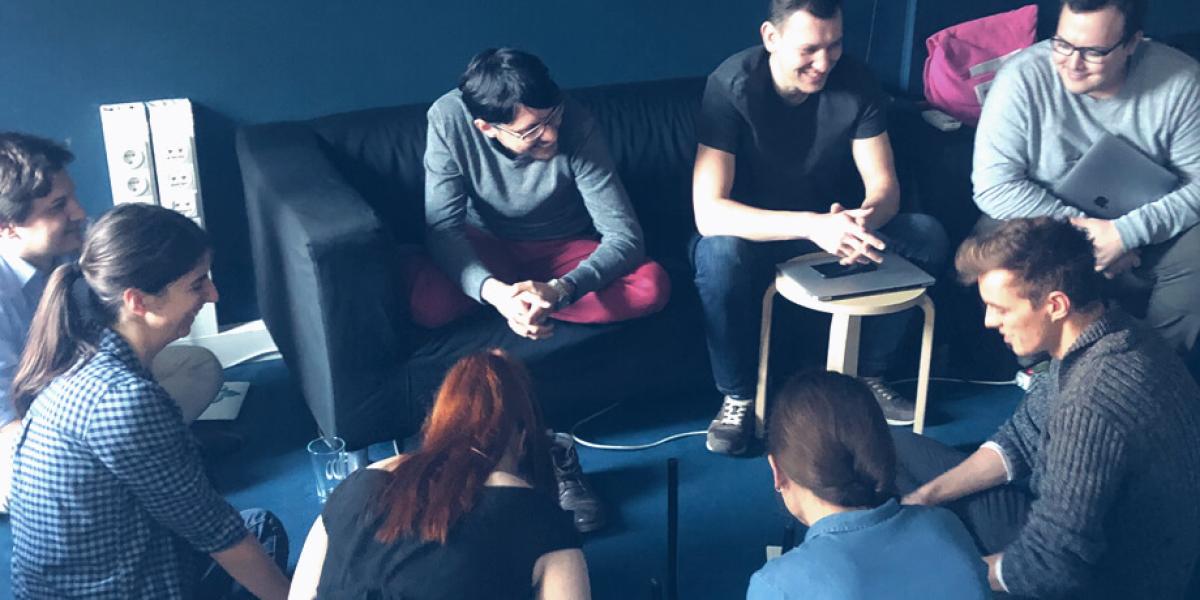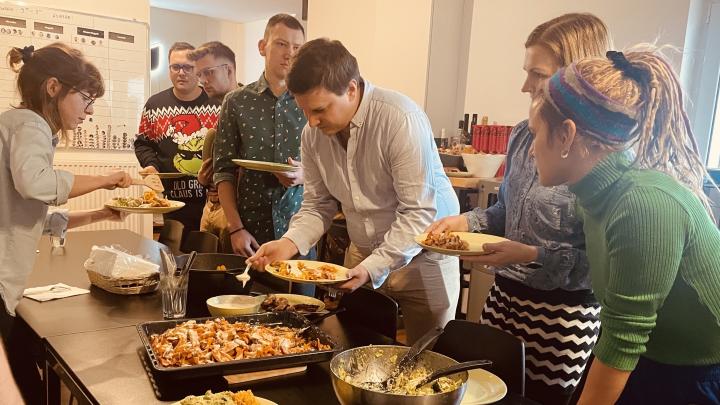
It was after six o'clock, but it was not yet clear when I would be able to go home to my newborn. I wondered how to place the new action button on the interface without compromising the previously established logic. With two days to go, there was still a lot to do while the budget for the project was running out. Suddenly the manager in charge of the project came in and said: "Book today, and the next two days on the PDR project, it can handle it."
The numbers had to be correct; everything worked on that basis. If the project didn't make it, we charged it to the new work; there was still room for it.
Fourteen years have passed since the above incident. In the meantime, I have changed companies and now work in an environment where we sell what we have done. We don't juggle overhead; we don't cheat our clients by taking a loss on one project and making it up on another.
We work with a work-consumer mindset. At IV, we strive to offer work, not hand it out. We don't manage developers; we leave them alone. We strive to invite people in on well-defined topics, deciding what they want to contribute to from the palette on offer. Everyone commits to what they will do in the two weeks. But it's up to him to decide which projects and tasks he will allocate to.
It is the responsibility of the project managers to ensure that the sprint is adequately prepared. They provide a checklist of tasks, and a target pace (the number of points we want to achieve) is set for each project.
Freedom of choice helps us to work on issues that we care about. If I can decide what I want to work on in the next period, then what I can relate to, what I can impact, and my competencies and values can be expressed in will play an essential role in that decision. It is, therefore, crucial to maximizing the choice of individuals.
Project qualification

We're looking for work that you're happy to do. We qualify inquiries in two steps.
In the first interviews, we look for the subject, person, and budget at the pre-bid stage.
During the first conversation, I try to get around how relevant the topic is to us. Do we have experience in the industry or business area? Why is it essential for the client to get the development done? How will you measure the success of the project?
I'm wondering who will be the project owner on the client-side. At this level, we are not going into details yet; I am more interested in how we will connect with the person we will be working with during the implementation of the project. It's essential that we are compatible with each other and how their expectations fit in with our ideas of working together.
We are now looking at the business plan for the project. We are mainly interested in how the new development will contribute to the current services. What is the long-term return on investment, how much is it worth spending, and how specific is the need?
It may turn out that we are not the right solution at some point. In this case, we will try to recommend a company or service that better fits the client's vision.
If it appears that all three aspects of the project may be relevant to us, we will present the new opportunity to the teams. We assess who is interested in the recent case and ask if anyone would veto the development. If so, we run another round of discussions to ensure a shared understanding and position on the issue. At the end of this phase, there is also a clear position from the team as to whether or not they want the new work.
The above process goes a long way to ensuring that everyone finds a job they like in IV. It's collateral damage that a relatively large number of opportunities are thrown out early on due to the thorough qualification process.
By saying no to opportunities where our value proposition is not in line with the call. We will also have more energy to perform in these projects. In this way, we can expand the shared working space where individual decisions can help everyone find the work that suits them best.
Starting a project - motivation map
Now that the project has been jointly decided and won, the next step is to draw up the motivation map with the implementation team.
At the start of a significant project, we hold a meeting to map out the project stakeholders and how the work will deliver value. Our company is a stakeholder. We then extend the question to team members, adding who needs what and what they can offer to the project to succeed.
Project Closing
After the kick-off, we will hold a project wrap-up meeting to review the collaboration process and inputs and conclude our effectiveness. We will open the notes written during the project launch and review the previously registered aspects. We look again at the why and draw up a summary to pass on to the client. This will help to ensure that everyone involved closes the project and draws lessons.
A measurable result
After the project closure, I schedule a meeting with the client-side project manager to discuss the results and the collaboration process. The experience can then be reported to the third party evaluating our company. This feedback can also serve as reinforcement for team members.
This article is the third in a series of articles on wellbeing. Previously, it covered positive emotions and current emotions.
Related articles:
- 6 Principles of a People-Centred Workplace - I've summarised six principles to focus on when creating a people-centered workplace
- By Values - Written by Ancsa on qualifying new projects.
- The Price of Freedom - Company exercise on individual choices for developers. We have given space to take personal responsibility for the next quarter.
- Martin Seligman: Flourish - Be Happy - Seligman is the father of positive psychology, the "discoverer" of learned inertia, and the creator of the well-being model. In his book, he draws a five-dimensional map, which can then delve into each of these topics in-depth: positive emotion, flow experience, impact (meaning), relationships, performance.
- Irvin D. Yalom: Existential Psychotherapy, Animula Publishers. Few such comprehensive analyses evoke meaning/meaninglessness, drawing on literary examples. I recommend it to anyone who has been burnt out in their profession and dares to dig deep into their anxiety.
- Simon Sinek: Start with the Why - If you only have twenty minutes, watch the presentation; if more, I recommend the book.
- István Marhefka: The Agile Principles - 12 Agile Manifesto principles with explanations.
Share with your friends!


